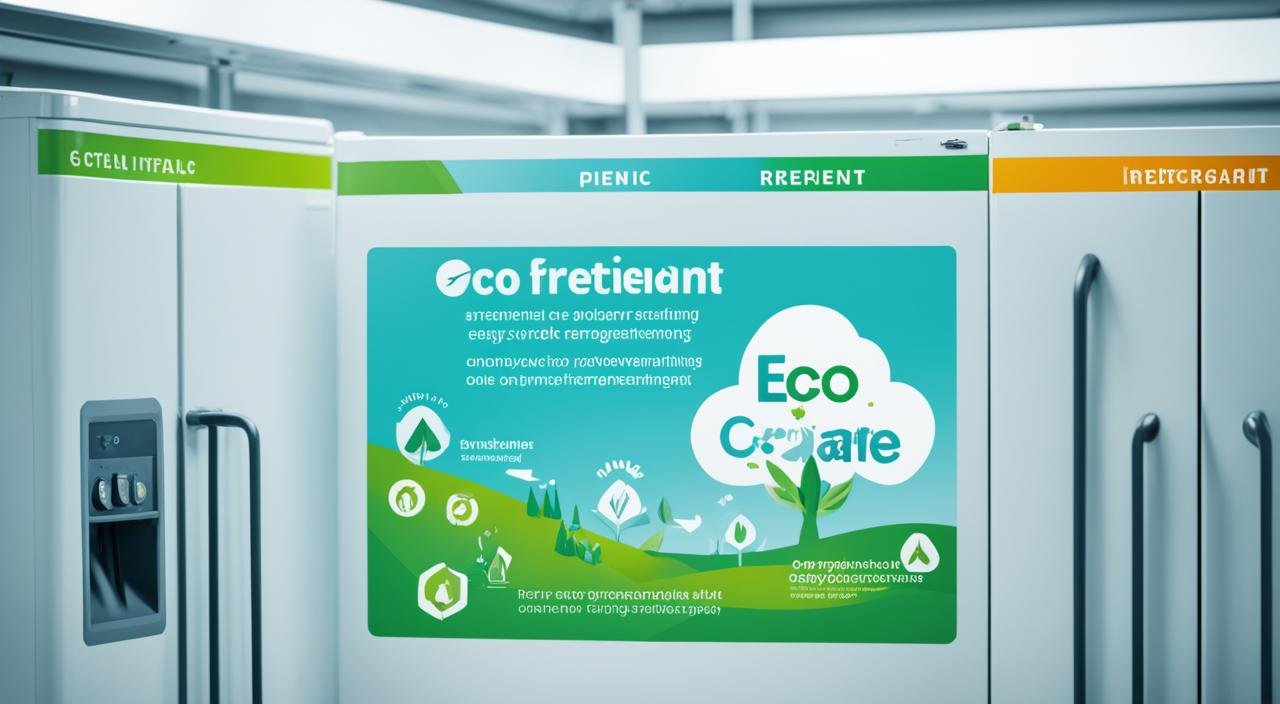Globally, we all understand the importance of maintaining a pest-free environment in your home. However, we also recognize the need to prioritize the health and well-being of your family and the planet. That’s why we are dedicated to providing you with eco friendly pest control methods that are effective, safe, and sustainable.
Traditional pest control methods often rely on harsh chemicals that can have detrimental effects on both human health and the environment. These chemicals can contaminate the air we breathe, the water we drink, and the soil in which our food grows. It’s time to shift towards a greener approach that prioritizes the long-term health of our homes and our planet.
Key Takeaways:
- Eco-friendly pest control methods are a safe and effective alternative to traditional chemical-based pest control.
- By implementing eco-friendly pest control methods, you can protect your home and family without compromising their health.
- These methods also minimize environmental impact and promote sustainability.
- Examples of eco-friendly pest control methods include prevention and exclusion techniques, natural repellents and traps, biological controls, and the use of natural pest control solutions.
- Choosing eco-friendly pest control methods ensures a healthier and more sustainable living environment for all.
The Dangers of Harsh Chemicals in Pest Control
Harsh chemicals used in traditional pest control methods pose numerous risks to human health and the environment. These chemicals have been linked to cancer, birth defects, neurological damage, and respiratory issues. In addition, they can contribute to pollution and habitat destruction. The use of chemical pesticides can also harm beneficial insects and animals. It is important to choose eco-friendly alternatives to pest control to minimize these risks and protect both our health and the environment.
Chemical pesticides are a widely used method for controlling pests. However, their adverse effects on human health and the environment cannot be overlooked. The risks of using chemical pesticides go beyond immediate exposure to harmful substances, as these chemicals can persist in the environment, contaminate water sources, and accumulate in the food chain. By opting for eco-friendly pest control methods, we can mitigate these risks and prevent the long-term consequences associated with the use of harsh chemicals.
When chemical pesticides are sprayed, they can drift and contaminate the air, soil, and water. This contamination can have far-reaching implications for ecosystems, wildlife, and human populations. The environmental impact of chemical pesticides includes the destruction of beneficial insects, such as bees and butterflies, which play a crucial role in pollination. Without these pollinators, the reproduction of many plants, including food crops, can be severely affected.
Furthermore, the health hazards of pesticides are a major concern. Regular exposure to chemical pesticides has been linked to an increased risk of developing various health conditions, including certain types of cancer, reproductive disorders, and neurological damage. Pregnant women, young children, and individuals with compromised immune systems are particularly vulnerable to the harmful effects of these chemicals. By adopting eco-friendly pest control methods, we can safeguard our health and create a safer living environment for ourselves and future generations.
A transition to eco-friendly pest control methods not only protects our health but also works in harmony with nature. By utilizing natural alternatives such as botanical extracts, essential oils, and biological controls, we can maintain a fragile balance between pest control and the preservation of biodiversity. These eco-friendly methods target pests while minimizing their impact on beneficial insects, wildlife, and ecosystems.
“The indiscriminate use of chemical pesticides not only harms pests but also endangers the delicate web of life surrounding us,” warns Dr. Jane Thompson, an environmental scientist and advocate for sustainable pest control methods.
She adds, “By embracing non-toxic and eco-friendly pest control practices, we can break free from the harmful cycle of chemical dependency and foster a healthier and more sustainable future.”
Dr. Thompson’s statement brings attention to the urgency of adopting eco-friendly pest control methods to protect our well-being and the environment.
Eco-friendly alternatives to traditional pest control methods offer numerous benefits. Apart from minimizing the risks of chemical pesticides, these methods often focus on long-term solutions by addressing the root causes of pest infestations. They encourage preventive measures like maintaining cleanliness, sealing entry points, and removing sources of food and water that attract pests. By implementing these proactive practices, we can significantly reduce the need for chemical interventions and create a pest-free environment using environmentally responsible means.
Key Risks Associated with Traditional Pest Control Methods:
| Risks | Description |
|---|---|
| Cancer | Exposure to chemical pesticides has been linked to an increased risk of certain types of cancer, including leukemia, lymphoma, and breast cancer. |
| Birth Defects | Chemical pesticides can interfere with fetal development and increase the risk of birth defects and developmental disorders. |
| Neurological Damage | Regular exposure to chemical pesticides can result in neurotoxic effects, leading to neurological disorders and cognitive impairments. |
| Respiratory Issues | Inhalation of chemical pesticides can cause respiratory problems such as asthma, bronchitis, and respiratory tract irritation. |
| Environmental Impact | Chemical pesticides contribute to pollution, habitat destruction, and the decline of beneficial insect populations, jeopardizing ecosystems and biodiversity. |
Protecting our homes from pests is essential, but it must not come at the expense of our health or the environment. By recognizing the dangers of traditional pest control methods and embracing eco-friendly alternatives, we can create a safer, healthier, and more sustainable future for ourselves and the planet.
Prevention and Exclusion Techniques
One of the most effective ways to practice eco-friendly pest control is through prevention and exclusion techniques. By implementing these methods, homeowners can not only protect their homes but also contribute to a healthier environment.
Sealing Entry Points
Sealing entry points is an essential step in preventing pests from entering your home. By identifying and sealing gaps in windows, doors, and other potential entryways, you can create a barrier that keeps pests out. This not only prevents the hassle of dealing with pests but also eliminates the need for harmful chemical treatments.
Installing screens over windows and doors is another effective measure to keep unwanted pests at bay. These screens act as a physical barrier, allowing fresh air to circulate while blocking entry to insects and other small creatures.
Door sweeps are also useful in preventing pests from entering through gaps under doors. These simple attachments create a tight seal and prevent pests from finding their way inside.
Removing Sources of Food and Water
Pests are attracted to sources of food and water, so removing these temptations can deter their presence in your home. Ensuring that all food containers are tightly sealed and stored properly reduces the likelihood of attracting pests.
Covering waste bins and regularly cleaning up food residues in the kitchen and dining areas are vital to eliminating potential food sources that may attract pests.
Additionally, removing standing water from around your home helps prevent the breeding of pests such as mosquitoes. Regularly emptying and cleaning birdbaths, gutters, and any other areas where water can accumulate is crucial.
Visualizing Prevention and Exclusion Techniques
The table below summarizes the key prevention and exclusion techniques for eco-friendly pest control:
| Prevention and Exclusion Techniques | Benefits |
|---|---|
| Sealing entry points | Prevents pests from entering the home |
| Installing screens over windows and doors | Creates a physical barrier against pests |
| Using door sweeps | Blocks gaps under doors to prevent pest entry |
| Sealing food containers | Eliminates food sources for pests |
| Covering waste bins | Reduces the attraction of pests |
| Regular cleaning of food residues | Removes potential food sources for pests |
| Removing standing water | Prevents breeding sites for mosquitoes and other pests |
By implementing these prevention and exclusion techniques, homeowners can create an environment that is unattractive to pests, reducing the need for harsh chemicals and promoting a more sustainable approach to pest control.
Natural Repellents and Traps
When it comes to eco-friendly pest control, natural repellents and traps are effective alternatives to harmful chemicals. These methods allow us to protect our homes and gardens without compromising the well-being of the environment. Let’s explore some of the options available.
Natural Pest Repellents
There are several natural repellents that can be used to deter pests from entering our living spaces. Peppermint oil and citrus are commonly used for their powerful scents, which pests find unpleasant. By mixing these natural ingredients with water, we can create a spray that can be applied to areas where pests have been observed or around the perimeter of our homes and gardens. This creates a barrier that pests are reluctant to cross, helping to keep them at bay.
Eco-Friendly Traps
Traps are another effective pest control method that can be used in an eco-friendly way. There are a variety of traps available, ranging from capture-and-release options to traps that eliminate pests in a humane manner. Depending on the type of pest you’re dealing with, traps can be baited with food or scents to attract them. By strategically placing traps in areas of pest activity, we can effectively reduce their population without the use of toxic chemicals.
Using natural repellents and traps not only provides a safer environment for our families and pets, but also helps protect the ecosystem around us. It’s a win-win situation that allows us to control pests while minimizing our impact on the environment.
Biological Controls
Biological controls are a natural and sustainable approach to pest management, utilizing the power of nature itself. By harnessing the abilities of natural predators and parasites, we can effectively control pest populations without relying on harmful chemicals. This method of pest control is not only environmentally friendly but also offers long-term solutions for maintaining a healthy ecosystem.
Using Natural Predators
Natural predators play a crucial role in keeping pest populations in check. Introducing beneficial insects like ladybugs, lacewings, and praying mantises can provide effective control against common pests such as aphids, mites, and caterpillars. These natural predators feed on pests, enabling a more sustainable and balanced ecosystem. By promoting the presence of these beneficial insects in our gardens and agricultural fields, we can reduce the need for chemical interventions and create a harmonious environment.
Parasitic Wasp Control
Parasitic wasps are another valuable addition to the biological pest control arsenal. These tiny wasps lay their eggs inside pest insects, which then act as host organisms for the developing wasp larvae. As the larvae grow, they consume the pest from within, eventually causing its demise. This method has been successfully used to control destructive caterpillars such as tomato hornworms and cabbage loopers. By harnessing the power of nature’s own control mechanisms, we can tackle pest problems without harming the environment or beneficial organisms.
Sterile Insect Technique
The sterile insect technique is a biological control method used to disrupt the reproductive cycle of pests. In this technique, male insects that have been sterilized through radiation or other means are released into the pest population. These sterile males then mate with pest females, resulting in no viable offspring. Over time, this technique can significantly reduce the overall pest population, providing long-term control. The sterile insect technique has been successfully used to combat pests like fruit flies, moths, and mosquitoes.
Microbial Pesticides
Microbial pesticides are a natural alternative to chemical pesticides, utilizing microorganisms to target specific pests. For example, Bacillus thuringiensis (Bt) is a naturally occurring bacterium that produces toxins lethal to certain insect larvae. This microbial pesticide can be targeted at pests such as caterpillars and mosquitoes, effectively reducing their populations without harming beneficial insects. Microbial pesticides are highly specific, environmentally friendly, and pose minimal risk to humans and other non-target organisms.
By implementing biological controls, we can strike a balance in pest management, harnessing the natural mechanisms that have evolved over millions of years. This approach not only minimizes the use of harmful chemicals but also ensures a healthier and more sustainable environment for generations to come.
| Advantages of Biological Controls | Disadvantages of Biological Controls |
|---|---|
| Environmentally friendly. Specific targeting of pests. Long-term pest control. Preserves beneficial insects. Reduced pesticide resistance | It may take longer to see results. Dependent on favorable environmental conditions. Requires knowledge of pest life cycles. May not offer immediate control. Effectiveness varies for different pests |
Natural Pest Control Solutions: Neem Oil, Diatomaceous Earth, and Boric Acid
When it comes to pest control, natural solutions are not only effective but also safe for both humans and the environment. Three key natural pest control solutions that have gained popularity are neem oil, diatomaceous earth, and boric acid. These options provide homeowners with non-toxic alternatives to chemical pesticides, allowing them to effectively manage pest problems while minimizing their environmental impact.
Neem oil for pest control:
Neem oil is derived from the neem tree and has been used for centuries in traditional medicine and agriculture. Its powerful natural properties make it an excellent choice for pest control. Neem oil acts as a natural repellent, deterring a wide range of pests from invading your home and garden. Additionally, it has insecticidal effects when applied directly to pests, helping to eliminate them. Neem oil can be easily applied to plants, trees, and other areas to effectively repel and control pests.
Diatomaceous earth for pest control:
Diatomaceous earth is a natural powder made from the fossilized remains of tiny aquatic organisms called diatoms. It works by absorbing the oils and waxes from the bodies of insects, causing them to dehydrate and die. Diatomaceous earth can be applied in various areas of your home and garden where pests are present. It is particularly effective against crawling insects like ants, cockroaches, and bed bugs. With its abrasive texture and desiccating properties, diatomaceous earth provides a safe and efficient method of pest control.
Boric acid for pest control:
Boric acid is a naturally occurring compound that is widely used in pest control. It is a versatile and effective solution for eliminating a range of insects, including ants, termites, and cockroaches. Boric acid works by interfering with the metabolism of pests, ultimately leading to their demise. This natural pest control solution can be applied around entrances, in wall voids, or mixed with water and sprayed directly onto pests. However, caution should be exercised when using boric acid in homes with pets or young children, as it can be mildly toxic if ingested.
In conclusion, neem oil, diatomaceous earth, and boric acid offer effective and organic alternatives to chemical pesticides. These natural pest control solutions provide homeowners with the ability to manage pest problems without compromising their health or the environment. By incorporating these methods into your pest control routine, you can create a safer and more sustainable living environment for you and your family.
Comparison of Natural Pest Control Solutions
| Control Solution | Pros | Cons | Target Pests |
|---|---|---|---|
| Neem Oil | Natural repellent Insecticidal effects Versatile applications | Slight odor may need repeated application | – Aphids – Whiteflies – Beetles – Caterpillars |
| Diatomaceous Earth | absorbs oils and waxes – Dehydrates insects safe for humans and pets | can cause skin dryness Effectiveness against flying insects may vary | – Ants – Cockroaches Bed bugs – Fleas |
| Boric Acid | effective against a range of insects long-lasting residual effects Versatile application methods | Mildly toxic if ingested Potential harm to pets and children | – Ants – Termites – Cockroaches – Silverfish |
Companion Planting and Beneficial Nematodes
Companion planting is a natural and effective method for pest control in gardens. By strategically planting certain plants together, we can create a harmonious ecosystem that deters pests and attracts beneficial insects. Some plants have natural pest-repelling properties, while others act as host plants to attract predators that feed on pests.
For example, planting marigolds alongside tomatoes can help repel harmful insects like aphids and nematodes. The strong aroma of marigolds acts as a natural deterrent, keeping these pests at bay. Additionally, interplanting mint with cabbage can help deter cabbage moths, a common pest in vegetable gardens.
Another beneficial pest control method for gardens is the use of beneficial nematodes. These microscopic worms are natural predators of pests like grubs, Japanese beetles, and root-knot nematodes. Beneficial nematodes can be applied to the soil according to the manufacturer’s instructions. Once applied, they seek out and parasitize the target pests, reducing their populations and preventing further damage.
Benefits of Companion Planting and Beneficial Nematodes:
- Deters pests without the need for chemicals
- Attracts beneficial insects that help control pest populations
- Creates a balanced and sustainable garden ecosystem
- Reduces the reliance on synthetic pesticides
- Preserves the health of plants and soil
By implementing companion planting and using beneficial nematodes, we can establish a natural and eco-friendly approach to pest control in our gardens. Not only does this method minimize the use of harmful chemicals, but it also promotes biodiversity and supports the overall health of our plants and soil.
Companion planting and beneficial nematodes provide us with effective tools to manage pests in our gardens while maintaining a healthy and sustainable environment. By working with nature, we can create a thriving ecosystem that benefits both plants and beneficial insects.
Additional Eco-Friendly Pest Control Methods: Pheromone Traps, Hot Pepper Spray, and Herbal Remedies
In addition to the previously mentioned methods, there are other eco-friendly pest control options available. These alternative approaches provide effective and non-toxic solutions for managing pests without harming the environment or risking human health.
Pheromone Traps
Pheromone traps are a valuable tool in pest control. They work by utilizing the natural pheromones released by pests to attract and trap them. Pheromones are chemicals secreted by insects to communicate with each other, particularly for reproduction purposes. By mimicking these pheromones, pheromone traps can effectively lure pests and prevent them from causing further damage to your home or garden.
Hot Pepper Spray
Hot pepper spray is a natural and homemade solution for repelling pests. It can be easily made by combining hot peppers, water, and a few drops of dish soap. The spiciness of the hot peppers acts as a deterrent for pests, including rabbits and deer. When sprayed around the perimeter of your garden or on susceptible plants, hot pepper spray can effectively keep pests at bay without the use of harmful chemicals.
Herbal Remedies
Herbal remedies offer another eco-friendly approach to pest control. Certain herbs and spices have natural insect-repellent properties, making them effective deterrents for pests. For example, planting marigold flowers in your garden can repel aphids, mosquitoes, and other pests. Garlic, cinnamon, and peppermint can also be used to deter insects. These herbal remedies provide a safe and natural way to protect your plants and home from unwanted pests.
By incorporating these additional eco-friendly pest control methods into your pest management strategy, you can effectively control pests while minimizing their impact on the environment and your health.
Conclusion
Eco-friendly pest control methods offer a holistic and sustainable approach to managing pest problems in our homes. By prioritizing the use of natural and non-toxic alternatives, we can protect our health, preserve the environment, and create a safer living environment for ourselves and our loved ones.
One of the key benefits of eco-friendly pest control is that it reduces our exposure to harmful chemicals. Traditional pest control methods often rely on harsh pesticides that can have detrimental effects on human health, including respiratory issues, neurological damage, and even cancer. By choosing eco-friendly options, we can minimize these risks and safeguard our well-being.
Furthermore, eco-friendly pest control methods play a crucial role in preserving the environment. Chemical-based pesticides can contaminate the soil, water, and air, causing pollution and contributing to habitat destruction. By embracing eco-friendly alternatives, we actively contribute to the conservation of our ecosystem.
Implementing eco-friendly pest control is not only an ethical choice but also a practical one. These methods provide long-term solutions that address the root causes of pest infestations rather than simply treating the symptoms. By focusing on prevention, exclusion, natural repellents, biological controls, and other eco-friendly techniques, we can effectively manage pests while promoting a healthier and more sustainable living environment for ourselves and future generations.





